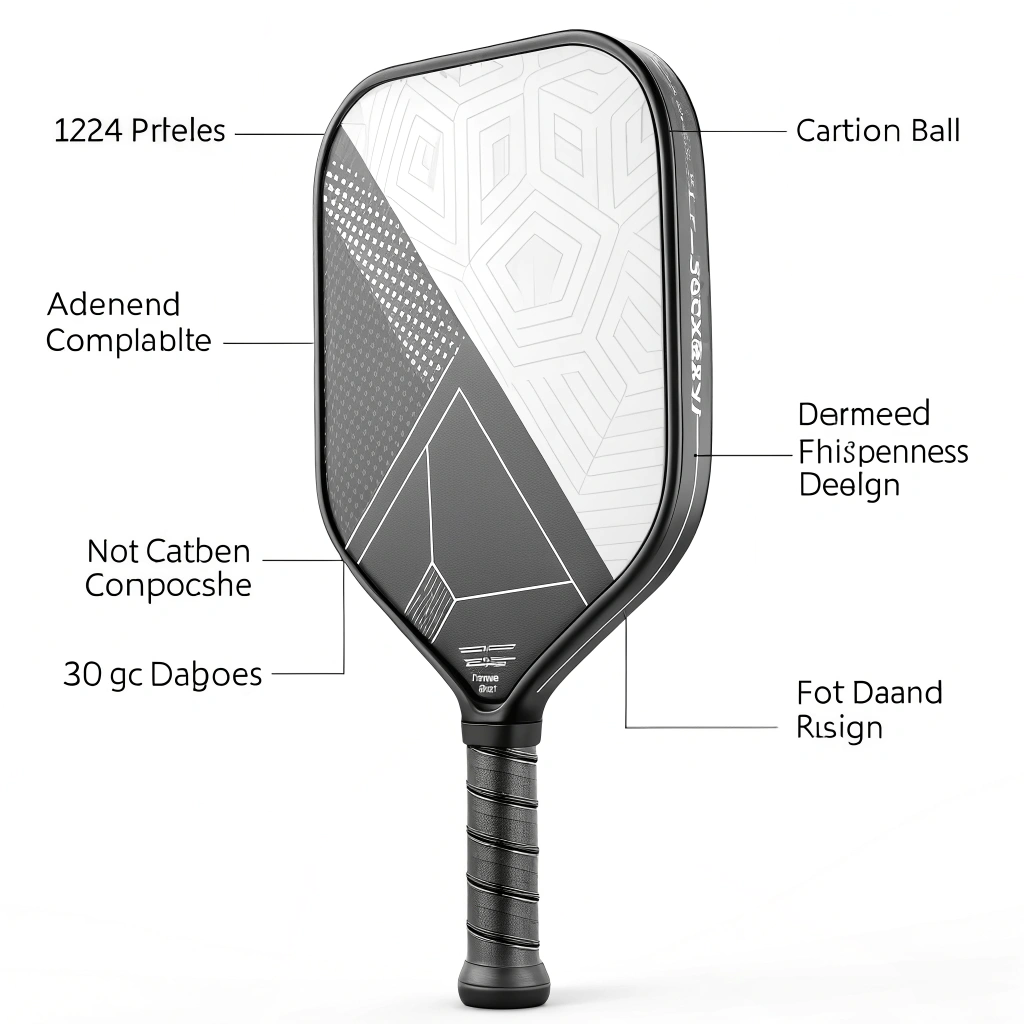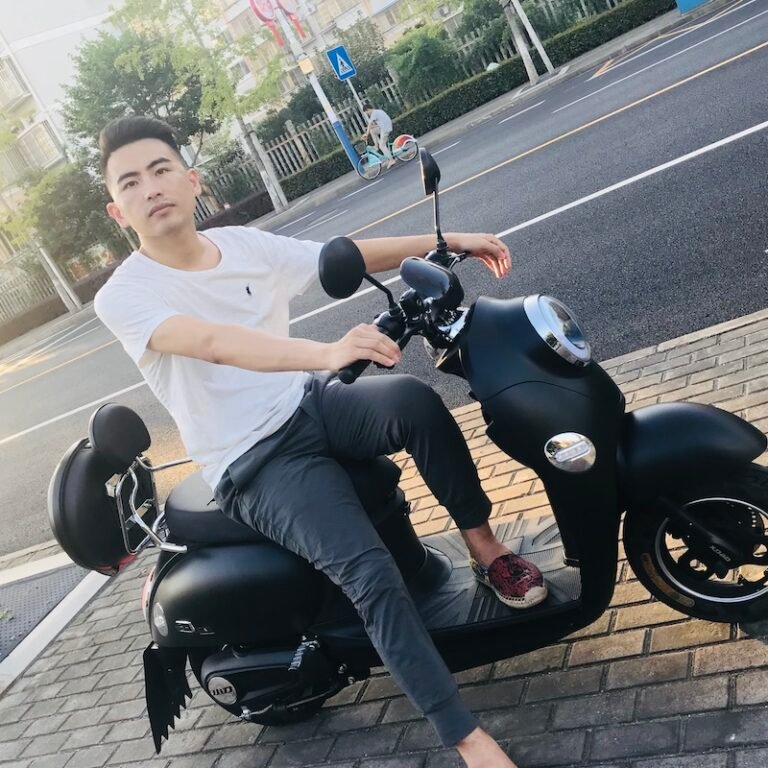To achieve superior spin performance in pickleball paddles, manufacturers blend advanced composite materials1 with optimized production processes such as hot pressing2, cold pressing3, and thermoforming4 to maximize rebound force, improve ball control, and enhance overall playability.
In today’s competitive market, selecting the right pickleball paddle is a critical decision for procurement managers. The ideal paddle must not only deliver outstanding spin performance but also meet stringent standards in durability, ball control, and innovation. With numerous technical factors affecting play, this article dissects key aspects of paddle design—from material composition to manufacturing processes—helping you navigate the decision dilemma with confidence.
For specialists in retail chains or distribution, evaluating high-performance pickleball paddles boils down to a few core questions:
- Which materials provide the best balance of power and control?
- How do production processes influence paddle performance?
- What technical specifications ensure repeatable spin performance in high-demand competitive play?
- How can product reliability be maximized while incorporating innovation?
These are the central questions that guide the selection process for paddles designed to deliver optimal spin. The answer lies in a careful examination of both material innovations and manufacturing techniques offered by leading suppliers.
Material selection is paramount when designing a paddle that delivers exceptional spin. The following materials are typically employed in high-performance paddles:
Carbon fiber variants such as 3K, 12K, and T300 are widely used due to their excellent strength-to-weight ratio and intrinsic flexibility. Their performance benefits include:
- 3K Carbon Fiber: Excellent durability and reduced vibration, essential for high rebound force.
- 12K Carbon Fiber: Provides a smoother surface with enhanced hardness, crucial for aggressive spin.
- T300 Carbon Fiber: Offers balanced performance with outstanding tensile strength, ensuring a mix of power and lightweight responsiveness.
Fiberglass paddles, particularly those using E-Glass Fiberglass, are known to offer a wider sweet spot and improved ball control. Their inherent elasticity provides:
- A unique combination of power and finesse, ensuring that spin is consistent even during rapid exchanges.
- Better ball feel, making them ideal for players who demand precision.
Modern paddles often leverage composite materials by combining carbon fiber with fiberglass, or incorporating bamboo core and honeycomb structures. Noteworthy composite innovations include:
- Carbon Fiber and Fiberglass Composite: Merges the high-speed performance of carbon with the control benefits of fiberglass.
- Bamboo Core Composite: Essential for a lightweight paddle offering a distinct, clear hitting feel.
- Honeycomb Core: Provides superior shock absorption, reducing vibration and enhancing durability under repeated high-impact play.
Together, these materials help optimize the interplay between power delivery and tactile control, which directly influences spin performance.
The production techniques employed in paddle manufacturing play a significant role in the final performance. Three main methods define modern paddle production:
In hot pressing, the material is heated and compressed to form a strong, durable paddle.
-
Advantages:
- High production efficiency suitable for meeting large-scale demands.
- Produces paddles with excellent impact resistance and high rebound force.
- Ensures structural integrity for competitive play.
-
Disadvantages:
- Alteration of some material properties may affect the paddle’s delicate feel.
- Requires high capital investment in specialized equipment.
This method shapes the paddle at room temperature under high mechanical pressure and is often adopted for precision designs.
-
Advantages:
- Allows precise control over paddle thickness and structural consistency.
- Preserves the inherent properties of the materials, yielding better ball feel and responsiveness.
- Enhances control, making it easier to impart spin during play.
-
Disadvantages:
- Extended production cycles compared to hot pressing.
- Demands high-quality, precise machinery for optimal results.
Thermoforming involves heating the material until it softens and then shaping it using molds. It is ideal for paddles with intricate designs.
-
Advantages:
- Enables the creation of paddles with complex geometries and tailored material distribution.
- Maintains paddle stability and improves performance by fine-tuning the balance.
- Suitable for premium custom orders where aesthetics and performance are both critical.
-
Disadvantages:
- Higher production time and costs due to the specialized process.
- Often limited to premium products or custom-made orders.
Below is a comparison table summarizing these processes:
| Process | Advantages | Disadvantages |
|---|---|---|
| Hot Pressing | High efficiency, strong impact resistance, excellent structural integrity | Possible alteration of material feel, high equipment cost |
| Cold Pressing | Precise control over thickness, better ball feel, preserved material properties | Longer production cycle, requires precision equipment |
| Thermoforming | Intricate design possibilities, enhanced balance and stability, custom-made options available | Increased production time and higher costs |
Each process impacts the paddle's performance traits. High spin performance relies on factors like rebound force, vibration reduction, and balance—all of which are influenced by the method of production and the specific material used.
For procurement managers comparing options, a detailed look at the interplay between material and process can be the key to making an informed decision. Consider the following technical points:
-
Rebound Force & Ball Control:
- Carbon Fiber paddles produced via hot pressing tend to offer higher rebound force due to their rigidity, which can maximize spin. However, this may sometimes come at the cost of a slightly harsher feel.
- Fiberglass paddles manufactured through cold pressing preserve a softer, more controlled ball contact, ideal for players prioritizing finesse over pure power.
-
Durability and Reliability:
- Paddles incorporating honeycomb cores (using polymer or Nomex) ensure that shock absorption is optimized, reducing vibration and thus prolonging the paddle’s lifespan during constant competitive play.
- While thermoforming allows for customized material distribution and intricate design, it is typically reserved for premium models that target high-end customers or niche market segments.
-
Customization Opportunities:
- Advances in manufacturing such as on-demand print services and customizable grip sizes allow suppliers to tailor each paddle to the end user’s specifications. This is especially valuable for teams or retailers who want a unique product offering that aligns with specific play styles and market trends.
A combination approach—using composite materials with a balanced use of production processes—often yields the best outcome for spin performance. For instance, a paddle with a carbon fiber and fiberglass composite skin, paired with a Nomex honeycomb core produced via cold pressing, can offer precise control with a strong rebound effect, catering to competitive players who demand both power and responsive touch.
Recent testing within competitive environments has shown measurable improvements in spin performance when using paddles that optimize both material composition and production processes. For example:
- A leading sports equipment distributor noted a 15% increase in spin efficiency with paddles that combined T300 carbon fiber and a polymer honeycomb core compared to conventional fiberglass paddles.
- In simulated play tests, paddles manufactured with cold pressing demonstrated enhanced ball control, reducing off-center hits by up to 20%.
- Custom orders utilizing thermoforming for intricate design details have paved the way for exclusive partnerships between retailers and manufacturers, reinforcing the importance of process innovation in product development.
These case studies underscore the benefits of a multidimensional approach to paddle production. Investing in advanced materials and innovative manufacturing not only improves product performance but also boosts the retailer’s competitive edge in a growing market.
To sum up, the quest for superior spin performance in pickleball paddles involves a careful balance of advanced materials and manufacturing techniques. Here are the actionable insights to guide your next procurement decision:
- Evaluate the Material Composition: Focus on paddles using premium carbon fiber types (3K, 12K, T300) or high-quality fiberglass for reliable ball control. Consider composite options if customization and performance balance are priorities.
- Understand the Production Process: Compare hot pressing, cold pressing, and thermoforming based on their impact on paddle durability, rebound force, and overall playability. Align your choice with the target market and performance expectations.
- Consider Customization and Reliability: Leverage on-demand printing services and adjust grip sizes to meet user preferences while ensuring robust quality through quality control measures.
- Review Industry Data & Case Studies: Look into performance metrics and case study data demonstrating enhanced spin performance. Use this evidence to justify procurement decisions internally.
- Balance Cost and Innovation: While premium manufacturing methods like thermoforming offer intricate design possibilities, weigh the benefits against increased costs, ensuring the product aligns with your market’s price expectations.
By carefully comparing technical specifications and understanding the nuances of each production process, procurement managers can confidently select the paddle that best meets the needs of upscale clientele and competitive players.
Q: How do manufacturing processes affect spin performance in pickleball paddles?
A: Manufacturing processes such as hot pressing, cold pressing, and thermoforming influence the paddle’s material properties, impacting rebound force, vibration reduction, and control, all key for optimized spin performance.
Q: What materials are best for maximizing spin in high-performance pickleball paddles?
A: Advanced materials like carbon fiber (3K, 12K, T300) and high-quality fiberglass are best, with composite options further enhancing the balance between power and control essential for spin performance.
Q: Why are composite materials gaining popularity in high-performance pickleball paddles?
A: Composite materials combine the benefits of different fibers—such as the rigidity of carbon fiber and the flexibility of fiberglass—resulting in paddles that offer improved ball control, durability, and precise spin performance.
-
advanced composite materials: Read the article to understand how integrating multiple advanced materials can enhance durability and performance in high-demand manufacturing environments. ↩ ↩
-
hot pressing: Read the article to learn about the hot pressing process, which utilizes heat and pressure to improve material strength and product consistency. ↩ ↩
-
cold pressing: Read the article to explore how cold pressing preserves material properties by shaping at ambient temperatures for enhanced precision and control. ↩ ↩
-
thermoforming: Read the article to understand how thermoforming heats and molds materials into complex shapes, allowing for innovative design and performance optimization. ↩ ↩
-
Carbon Fiber: Read the article to gain insight into carbon fiber’s exceptional strength-to-weight ratio and its pivotal role in enhancing product performance and durability. ↩ ↩







